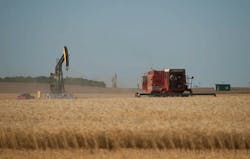Report: Shale Gas Boom Driving Workplace Fatalities Higher in North Dakota
Thanks to the Bakken Shale, North Dakota has become the second-largest oil-producing state in the nation. But the state is the clear leader in a far more dubious category: the workplace fatality rate.
In 2012, North Dakota had the highest fatality rate in the nation, at 17.7 deaths per 100,000 workers, according to an analysis by the AFL-CIO.
“North Dakota stands out as an exceptionally dangerous and deadly place to work,” the AFL-CIO explains in its 23rd annual report on workplace safety and health, “Death on the Job: The Toll of Neglect.” “The state’s job fatality rate of 17.7 per 100,000 is more than five times the national average and is one of the highest state job fatality rates ever reported for any state.”
AFL-CIO, which uses the latest data from the U.S. Bureau of Labor Statistics for its analysis, notes that North Dakota’s fatality rate more than doubled from a rate of seven deaths per 100,000 in 2007, and the number of workers killed on the job increased from 25 to 65.
Wyoming had the second-highest fatality rate in the nation (12.2), followed by Alaska (8.9), Montana (7.3) and West Virginia (6.9). The lowest state fatality rate (1.4 per 100,000 workers) was reported in Massachusetts.
With the emergence of hydraulic fracturing and horizontal drilling technology, North Dakota’s petroleum-rich Bakken Shale has been booming – and so has the state’s economy. According to the U.S. Bureau of Economic Analysis, the state’s economy in 2012 grew by 13.4 percent, five times faster than the national average. Meanwhile, the state’s unemployment rate – 2.6 percent as of March 2014 – continues to be the lowest in the nation.
But the data suggests that workers have paid a steep price for the energy boom. North Dakota’s fatality rate in the mining and oil and gas extraction sector was 104 deaths per 100,000 workers in 2012 – more than six times higher than the national fatality rate in the sector (15.9). The state’s fatality rate in the construction sector was 97.4 per 100,000, nearly 10 times higher than the national rate (9.9).
Nationwide, fatalities among oil and gas companies spiked 23 percent to 138 deaths in 2012, according to preliminary data from the Bureau of Labor Statistics.
